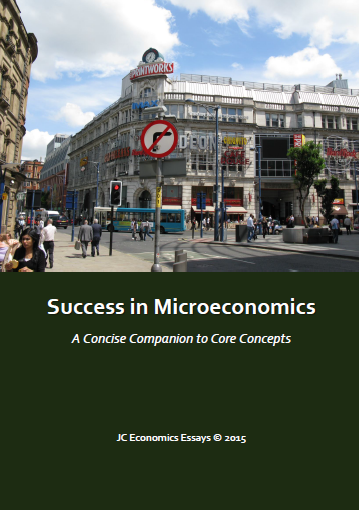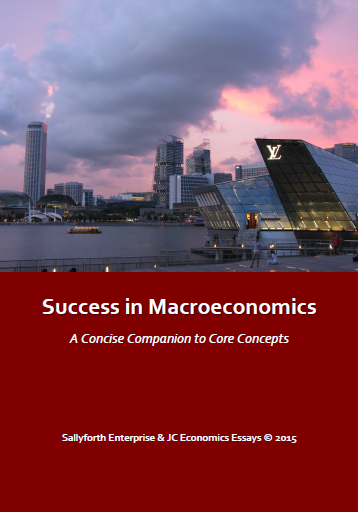Discuss whether fiscal policy is the most
effective way for Singapore
Introduction
This paper discusses if fiscal policy is the most effective way forSingapore to sustain
a successful economy, where the idea of a “successful economy” is based on
attaining the macroeconomic goals of generally low unemployment, low inflation,
and economic growth. The means of attaining each of these desirable
macroeconomic objectives may sometimes be at odds with other macroeconomic goals because of trade-offs.
The most effective way for Singapore to sustain a successful economy is not to
depend on one single macroeconomic policy; in particular, due to Singapore’s small and open
economy, fiscal policy would go only a little way to help Singapore attain her
macroeconomic goals, and a combination of exchange rate policy and supply-side
policies would work more effectively instead.
This paper discusses if fiscal policy is the most effective way for
Fiscal Policy Can Be Effective
First
and foremost, it can be argued that fiscal policy could theoretically achieve
the macroeconomic goals of low unemployment, low inflation, and economic
growth. First, low unemployment can be achieved through the use of expansionary
fiscal policy. What does expansionary fiscal policy mean? It means increasing government spending (G) or lowering taxes
(T), in times of high unemployment or recession. The discretionary expenditure
by the government, for instance on the military or on education, would raise
aggregate demand (AD) and drive up employment, due to the multiplier effect, thus
resulting in a higher level of employment. AD shifts to the right and causes
unemployment to fall. What is unemployment? Unemployment is defined as the situation in which people
who are willing and able to work are unable to find employment. Secondly, likewise,
stable actual economic growth can attained the same way, because expansionary
fiscal policy can ensure that growth is maintained during recessions. Actual
growth can be thought of as an increase in real national output. These
implications are reflected in the diagram below.
Likewise,
fiscal policy can be used to reduce inflation by contracting AD in times of
high inflation in order to reduce inflationary pressures and control prices. This
is the reverse of expansionary fiscal policy; contractionary fiscal policy can
reduce AD in times of inflation. Inflation is defined as a persistent and
inordinate increase in the general price level, and if it is demand-pull, contractionary
fiscal policy reduces AD accordingly.
Limitations of Fiscal Policy
On
the other hand, the way fiscal policy works in reality is different from theory
because policymakers may not know exactly where the full employment level is in
reality, and time lags, recognition lags, and implementation lags are all real.
All the theoretical effects of fiscal policy also assume that the economy has a
sufficiently large multiplier for the injections by the government to make
large impacts on national income and employment. It also presupposes that the
government’s budget does not suffer from massive deficits, and that fiscal
policy would not result in the “crowding out effect”, when the government
drives up interest rates, negatively affecting the private sector, when it
attempts to finance policies through borrowing.
However,
more importantly, while the Singapore government’s finances is such that it can
potentially deliver a fiscal stimulus without financial or political problems,
the fact that Singapore’s national multiplier is small implies that this would
not have a great impact on growth or employment. The high level of imports and high
proportion of savings in Singapore
means that the multiplier effect would be small. Furthermore, fiscal policy
seems most effective in reducing cyclical unemployment, associated with falling
AD during a recession, and does not go a long way in relieving structural or
frictional unemployment; as for inflation fiscal policy helps reduce demand-pull
inflation and does not go a long way in alleviating cost-push inflation. Even
if fiscal policy could generate employment, it is only in the short run, and unemployment
will eventually return if it was actually due to structural unemployment, the
mismatch of skills and knowledge in an economy due to structural changes in the
methods of production, and hence such reductions in unemployment and the
concomitant growth would not be sustainable.
Exchange Rate Policy
In
order to sustain a successful economy, arguably a combination of fiscal,
monetary and supply-side policies is required instead. In particular, monetary
policy – in Singapore ’s
context, an exchange rate policy – would be able to affect AD during short-term
economic fluctuations. It should be noted that interest rates-based monetary
policy cannot be applied in Singapore
as a result of Singapore ’s
vulnerability to short-term capital flows and thus an exchange rate policy has
to be adopted in Singapore .
As Singapore
is dependent on imports, low inflation can be sustained instead through a gradual
appreciation of the currency, because the imports would look relatively cheap
vis-à-vis other countries. However, it should be noted also that this would
affect exports negatively, on the flip-side.
On
the other hand, depreciation can be used to increase AD, by raising demand for Singapore ’s exports, since short-term
depreciations of the Singapore
dollar could help to raise competitiveness of Singapore ’s exports and thus drive
growth and generate employment. However, it should again be noted that this
would affect inflation, on the flip-side. Hence, trade-offs are inevitable,
although exchange rate policy is clearly a viable alternative.
Supply-Side Policies
As
for long-term economic growth and stability, supply-side policies are necessary
to sustain potential growth. Education and retraining of workers has to be
implemented in order to maintain flexibility of labour and allow Singapore to
cope with structural changes.
Furthermore,
in terms of reducing unemployment, job fairs and placement or matching agencies
could also help reduce frictional unemployment. Low domestic inflation can be
maintained in the long run through continuous improvements in productivity and
the enhancement of cost-competitiveness. The productive capacity of the economy
must grow continuously in order for increases in AD to translate into sustained, non-inflationary, real economic
growth in Singapore's national output; this increase in LRAS can be encouraged through fiscal
spending that has supply-side effects such as investments in infrastructure and
education, which would both affect AD and LRAS, leading to economic growth both
actual and potential.
Conclusions
In
conclusion, the application of fiscal policy is not an effective way for Singapore to
sustain a successful economy that achieves its macroeconomic aims, thanks primarily to the
small and open nature of the Singapore economy that gives rise to a small multiplier
resulting from the high level of leakages due to high savings from CPF and high import contents in inputs. This reduces the impact that fiscal policy
can have on the economy because the famous Keynesian multiplier effect is mitigated. The current managed float exchange rate policy that Singapore
adopts is more significant in achieving short-term demand-management
objectives. In the long-run, the government would sustain a successful economy through
a combination of both demand-management and supply-side policies that enhance the
long-term productivity and productive capacity of the economy, thus providing potential growth, whilst driving AD
through actual growth, which reduces unemployment and spearheads economic development.
Hence, fiscal policy is clearly not the most effective way – an economic policy package
is better.
JC Economics Essays: Tutor's Comments - This Economics paper is very well written, full of Economics perspectives, theories, concepts, and arguments. It also has good content on the Singapore economy. It covers the relevant Economics materials required and has an excellent thesis- anti-thesis - synthesis approach, that uses relevant examples that are contextual, real life, and related to the question. The conclusion presented and argued is clear, relevant, and evaluative in nature - do remember the important keyword here is "evaluative". The usual Economics tutor's caveat applies, of course, that naturally to get the highest grades, students must always remember to add Economics diagrams that are well-labelled, properly and carefully explained, and relevant to the context and question. This Economics essay under examination conditions can definitely get the highest marks in an examination. As a friendly, useful tip, do think through this particular Economics paper and reflect on these educational comments presented. Thanks for reading and cheers!



